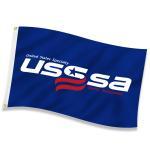FLAG KNOWLEDGE
Today in History: Flag-related Events-June 2nd
Flags have served as symbols of identity, unity, and national pride throughout history. On this day, June 2nd, several notable events related to flags have taken place. Let’s delve into some of these significant moments:
One of the earliest occurrences took place in 1692 when the flag of the British East India Company was officially adopted. This flag, a precursor to many colonial flags, featured the British flag, known as the Union Jack, in the canton, and the company’s emblem—a red St. George’s Cross on a white field—in the fly.
Jumping ahead to the birth of a nation, June 2nd, 1777 holds great importance for the United States. It was on this day that the Continental Congress adopted the Stars and Stripes as the official flag. This iconic flag comprised thirteen alternating red and white stripes, representing the original colonies, and a blue canton adorned with thirteen white stars, symbolizing a new constellation of states.
Moving across the Atlantic, June 2nd, 1896 witnessed the official adoption of the flag of Italy, commonly referred to as the Tricolore. Its design featured three vertical bands of green, white, and red, symbolizing hope, faith, and charity, respectively. This flag continues to represent the proud nation of Italy to this day.
Another milestone in flag history occurred on June 2nd, 1946, with the approval of the design for the national flag of Italy. Known as Il Tricolore, it maintains the iconic three vertical bands of green, white, and red, serving as a powerful symbol of unity and patriotism for the Italian people.
On a regional level, June 2nd, 1953 marked a significant change for Newfoundland, as its flag was officially retired when the province joined Canada as its tenth province. The flag featured a blue ensign with the Union Jack in the canton and the Newfoundland coat of arms on the fly side. This event signified a new chapter in the province’s history as part of the Canadian federation.
Lastly, we reach the year 1990 when Namibia, after a long struggle, gained independence from South Africa. On June 2nd of that year, Namibia adopted its current flag, a vivid representation of national identity. The flag features a diagonal band of blue with a white-bordered red triangle on the hoist side, symbolizing the country’s rich resources, and a green triangle on the fly side, representing its agriculture and natural beauty.
These notable flag-related events from June 2nd serve as reminders of the powerful symbolism behind flags and the historical moments they represent. Whether it is the birth of a nation, the unification of people, or the celebration of independence, flags continue to hold a significant place in our collective history and evoke a sense of pride and unity for all who behold them.


 Custom Flags
Custom Flags Garden Flags
Garden Flags Mini Flags
Mini Flags Desk Flags
Desk Flags Feather Flags
Feather Flags Teardrop Flags
Teardrop Flags Rectangle Flags
Rectangle Flags Yard Signs
Yard Signs Vinyl Banners
Vinyl Banners Mesh Banners
Mesh Banners X Banners
X Banners Pole Banners
Pole Banners Vinyl Lettering
Vinyl Lettering Car Decals
Car Decals Window Decals
Window Decals Floor Decals
Floor Decals